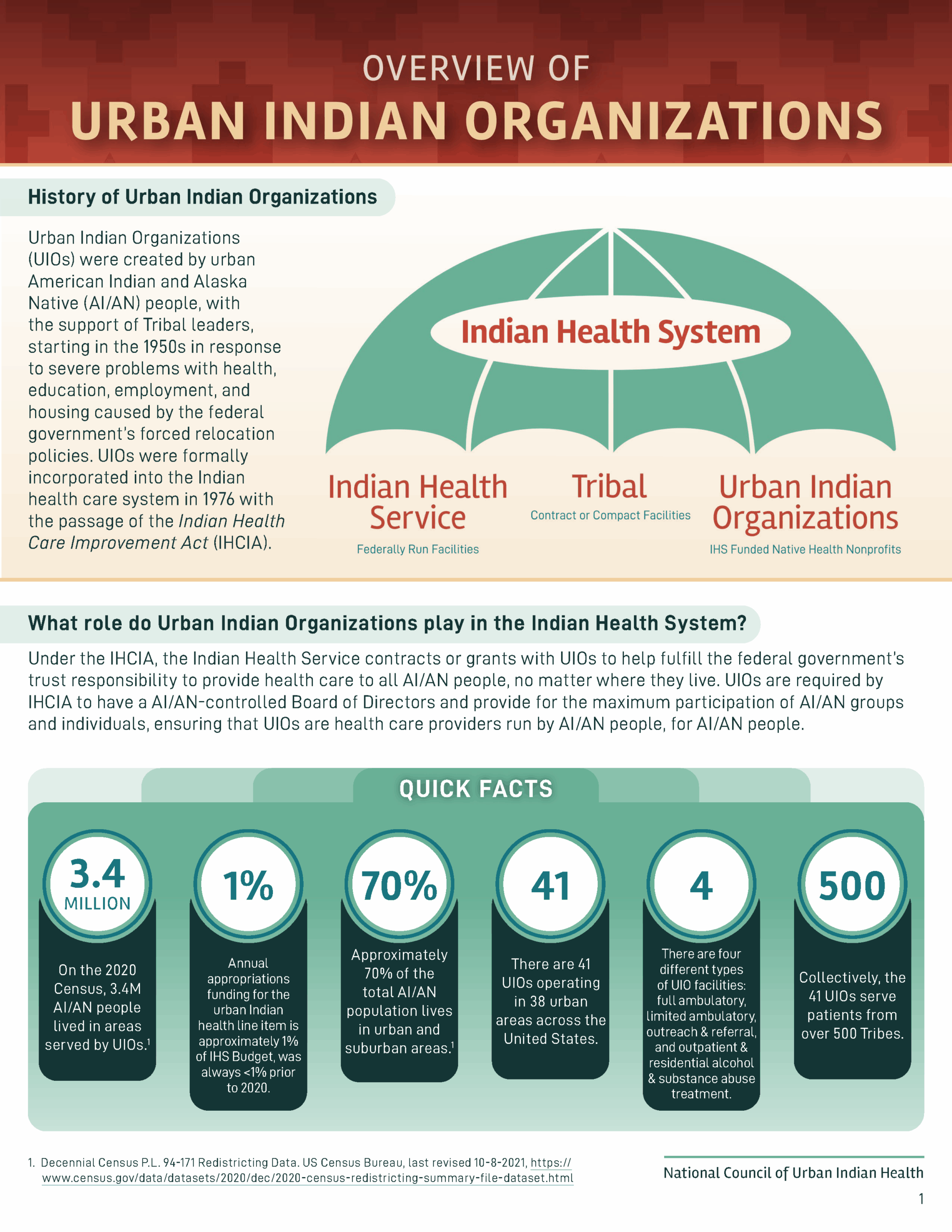Who are urban Indians?
More than 70 percent of American Indian and Alaska Native (AI/AN) people now live in urban areas, compared with 45 percent in 1970 and 8 percent in 1940. This migration occurred for several reasons, mainly because of federal government coercion during the Relocation Era (1945-1968) and later because of the lack of economic opportunities on reservations.
Twenty-seven percent of AI/AN people live in poverty, proportionately more than any other group and double the rate of 14 percent of Americans generally. In fact, AI/AN people in many large cities experience poverty at levels comparable to and in excess of the more under-resourced reservations.
How do urban Indians receive health care?
Urban Indians receive health care from a variety of sources, including private insurance, the exchanges established under the Affordable Care Act (ACA), Medicare, Medicaid, and the Department of Veterans Affairs (DVA).
The most important source is the Indian Health Service (IHS), which uses a three-pronged system to provide health care known as the IHS/Tribal/ Urban Indian Organization (I/T/U) health system.
What are the health care challenges experienced by urban Indians?
Urban Indians are confronted with an array of dire threats to their physical and mental health and well-being—alcoholism, suicide, high unemployment, behavioral health issues, and racial prejudice. Nevertheless, as noted above, IHS spends only a tiny fraction of its budget on urban programs.
Financially hard-pressed cities are almost unable to offset that whopping deficit. From Medicaid to DVA, federal agencies short-change AI/AN people who live in urban areas, paying the entire bill for AI/AN patients when they receive health care services on reservations but not when those same AI/AN patients receive those same health care services from UIOs.
What are Urban Indian Organizations?
UIOs were created by urban American Indian and Alaska Native people, with the support of Tribal leaders, starting in the 1950s in response to severe problems with health, education, employment, and housing caused by the federal government’s forced relocation policies.
Congress formally incorporated UIOs into the Indian Health System in 1976 with the passage of IHCIA. UIOs are an integral part of the Indian health system, comprised of the Indian Health Service, Tribes, and UIOs (collectively I/T/U).
UIOs are required by law to have a Native-controlled Board of Directors and provide for the maximum participation of Native groups and individuals, ensuring that UIOs are healthcare providers run by Native people, for Native people.
There are four different UIO facility types, including full ambulatory, limited ambulatory, outreach and referral, and outpatient and residential alcohol and substance abuse treatment. UIOs provide essential healthcare services (based on facility type), including primary care, behavioral health, and social and community services, to patients from over 500 Tribes in 38 urban areas across the United States.
What are the authorities for urban Indian health care?
The Indian Health Care Improvement Act, which was permanently authorized in 2010 pursuant to a provision included in the ACA, authorizes Indian health care programs. IHS is part of the Department of Health and Human Services.
The Senate Indian Affairs Committee and the House Natural Resources Subcommittee on Indian, Insular, and Alaska Native Affairs are the congressional authorizers, specifically health care for AI/AN people, and the Senate and House Interior Appropriations subcommittees are the congressional appropriators.

